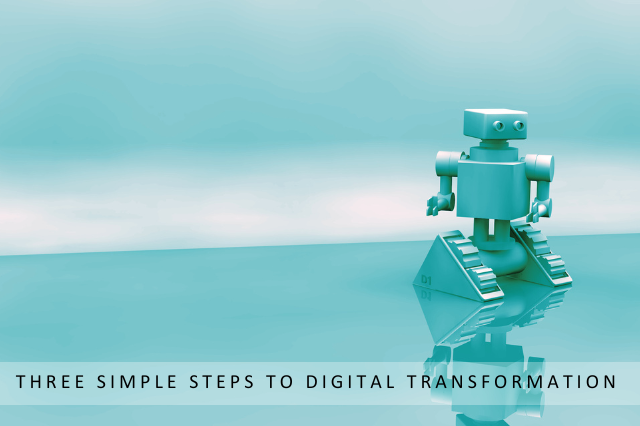What IS digital transformation?
If you search Google, or indeed any other search engine, then you’re likely to get over 800,000,000 hits, and that is a lot of information.
If you were to then ask something like Chat GPT for its views on digital transformation, then this may well be distilled down to a few hundred words, but how do you know that is the right answer for you? The honest, and perhaps not popular one, is you don’t.
In this blog, we’re going to look at the three main steps to digital transformation, but from a slightly different angle, that of the people in your business.
Step 1 – Digitisation
The first step to digital transformation is moving away from analogue record keeping. By that we mean you move away from writing things down on pieces of paper and move to a digital method of working.
In this day and age, most larger businesses will have started this process. They will likely have most of their information stored digitally, perhaps using things like Microsoft SharePoint or Google Drive.
This step is possibly the easiest one in terms of people and buy-in, because it’s less threatening. But there can be some resistance to this, especially if people feel like their way of doing things will change. It’s also worth remembering that this is your first step towards digital transformation, get the communication right on this, and your journey is likely to be a whole lot easier!
Step 2 – Digitalisation
Subtly different from Step 1, digitalisation involves the use of more complex systems, for example an ERP or CRM system.
If digitisation is about making documentation digital in your business, then digitalisation is all about making whole processes digital rather than single steps. With this change, you’re likely to achieve more efficient processes and increase productivity. Though it doesn’t always have to be done in one huge leap.
However, because this step is likely to create significant change in your business, it is more likely to be harder to achieve without your team’s buy-in than digitisation. For this reason alone, it’s essential that you employ some good change management practices throughout this process.
If you read our June blog, then you’ll know that change management is something that can strike fear into the hardiest of business owners. The reason for that is usually bad experiences that they’ve had before. We’re sure a lot of you can relate to that one! But, with many businesses upping their game and making digitalisation part of their strategy, this is becoming more of a must do, rather than would like to have. Especially if you’re part of a complex supply chain.
In terms of your people, the fundamental requirement for any digitalisation project is communication. Too little, and you run the risk of the rumour mill cranking up; too much and you can alienate even your strongest of believers!
This is why we’d always recommend that you invest in some external support to ensure your processes and messaging are on point.
Step 3 – Digital Transformation
The final stage is digital transformation, which takes everything you’ve done so far, but adds even more into the mix! This is not just about adding in new software, this is about your whole business strategy and reshaping your organisation.
This is where you can incorporate new technology such as Robotics, the Internet of Things and even Artificial Intelligence if that is suitable for your business.
These changes can feel like they are wholesale changes, and in most cases, they are, but they can also propel businesses forward and make them even more competitive, which is vital in the complex world that we now live in.
A good example of this is how demanding we’ve all become as consumers. These days you can order something online, expect to pay a great price and receive it the next day (if not sooner!). We don’t even think twice about it. However, that level of services is now becoming the benchmark that businesses are being measured against. Without digital transformation, that level of speed and agility can be next to impossible.
But what does this mean for your people? Again, it’s something where you need them on board. But now it’s not just about being on board with how to achieve better performance in your business, it’s about encouraging them to be changemakers too. This is where you can really make a difference. Encouraging your people to be innovators is one of the best things you can do. By doing this, you’re giving them a sense of autonomy, they’re able to shape the way they work and, in some respects, control their own destiny.
If you’re willing to take the leap towards digital transformation, then there can be great rewards, but this also can come with some risks if you don’t have a strategy in place.
If you’re taking your first steps towards digital transformation and are looking for some support, then please get in touch. Our Business Systems Health Check could be a great starting point, but we also provide several other services which can help you achieve your digital transformation goals.

